Many people are not interested in the meaning of moles on the body, and in vain, because these formations on the skin can be very dangerous for the body. There are many types of such formations, they differ in shape, size, color. Some people have a huge number of them, others only a few, but everyone has at least one. Read why these formations appear on the skin, how to understand which of them are dangerous, get acquainted with in effective ways removal.
What are moles
Every person should know the nature of formations, which in scientific language are usually called nevi. Moles are a concentration of melanocyte cells. Melanin, the pigment that determines color, is concentrated in them. They are different shades Brown, black, red, yellow and even purple. According to their shape, they are classified as flat, convex, hanging, lumpy, or with a stem.
Moles are of a similar nature to birthmarks. The difference is that the former can appear, change and even disappear throughout life (the most active period is from six months to 25 years), while the latter are given to a person from birth. They can be located on any part of the skin: both the face and the body. There are cases of their occurrence on mucous membranes.
Why moles appear
You have already read that pigmented formations can appear and disappear at any age, but what does this depend on? Factors that provoke the appearance of moles on the body:
- Heredity. Often in children, nevi appear in the same areas as in their parents, and sometimes in even greater numbers.
- Sun rays. Melanin under their influence is produced several times more intensely. Staying in the sun for a long time is dangerous not only because new ones can form, but also because old ones can transform into a tumor, even malignant.
- Viruses, injuries, radiation, x-rays. Under the influence of each of these factors, melanocytes can group and come to the surface of the skin.
- Hormonal changes. Any surge in hormones (especially in women) can trigger the appearance or disappearance.
- Cluster of blood vessels. Nevi occur due to the accumulation of small processes of blood vessels.
- Dysfunctions internal organs and systems. More often they lead to the appearance of vascular nevi. They can develop due to dermatological diseases, dysfunction of the large intestine, pancreatic dysfunction, and imbalance of lipid metabolism.
Reasons for the appearance of moles on the body in women
The occurrence of nevi is directly related to hormonal surges, of which there are plenty in the female body. The reasons for the appearance of moles on the body in women can be changes in the body associated with pregnancy (nevi often form on the skin of the abdomen, legs), menopause, and puberty. Sometimes, although rarely, they occur before or during menstruation.
How moles appear
Skin cells become more and more melanin pigment and transform into melanocytes. This occurs under the influence of one of the causes of nevi listed above (sun exposure, hormones, etc.). The accumulation of melanocytes is the reason why moles appear on the body. Whatever the nature of the nevus, the mechanism of its development always looks like this.
Types of moles
Formations can look very different, but according to a number of characteristics they are usually combined into several groups. The following types of moles are distinguished according to the nature of their occurrence:
- Angiomas. Formed due to pathological transformation of blood vessels. May be flat or convex, pink, red, purple. They will never become malignant.
- Hemangiomas. A type of angioma. They appear shortly after birth in a child, gradually turn red and slightly swell, and have clear boundaries. Most often localized on the neck and face.
- Vascular malformation. There are two types of defect. The first is called port-wine stains and affects the torso, face, and arms. At first they are pale pink, but then they become scarlet or crimson, and with any dilation of the blood vessels they acquire brightness. The second type of malformation is a stork bite. Deformation of blood vessels in a child due to excessive pressure from the mother’s pelvic bones. These are asymmetrical reddish spots that last up to a year.
- Lentigo. Flat, different shades of brown. Small, reminiscent of freckles, but slightly darker in color.
- Mongolian spots. Clusters of bluish or brown nevi big size in the lumbar and sacrum areas, absolutely flat.
- Blue. Dense round small nodules. They can take on all shades of blue. Most often appear on the buttocks, face, and limbs.
- Coffee stains. Flat, light shade, different sizes.
- White. Appear due to the production of a reduced number of melanocytes.
- Sutton's nevi. Flat, the skin around which is not pigmented.
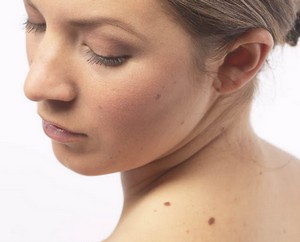
You read about the origins of moles. They also differ in the depth of the skin layer in which they are formed:
- Epidermal. IN top layer skin, flat. They most often form in the groin, feet and palms. The shade can range from pale beige to coffee brown.
- Intradermal. Convex. They can be smooth or rough, often dark. If hair grows from the intradermal, then this is a sign that it is safe.
- Borderline. Flat, any shape, smooth. There is never any hair on them.
Classification by appearance:
- Flat. Dry and smooth, they do not pose a health hazard. The most common type for humans.
- Warty. Very dark and wart-like. Their condition must be constantly monitored.
- Convex. Dark, can be either smooth or rough, covered with coarse or vellus hair.
To size:
- small – up to 1.5 cm in diameter;
- medium – up to 10 cm;
- large – more than 10 cm;
- gigantic - cover significant areas of the body or face.
Dangerous moles
Some nevi, under the influence of one reason or another, can develop into cancerous tumors. As a rule, this occurs due to injury to the formation or prolonged exposure to ultraviolet rays. Dangerous moles are considered to be those that appeared in adulthood and rapidly change their appearance. appearance and exceed a centimeter in diameter. A person should monitor such suspicious formations very carefully and regularly see a dermatologist.
People at increased risk of their occurrence include:
- fair-skinned, red-haired, with lots of freckles and age spots;
- have already removed malignant tumors;
- over 50 years of age;
- who have many dark ones;
- quickly “burn” in the sun;
- whose relatives had skin cancer.
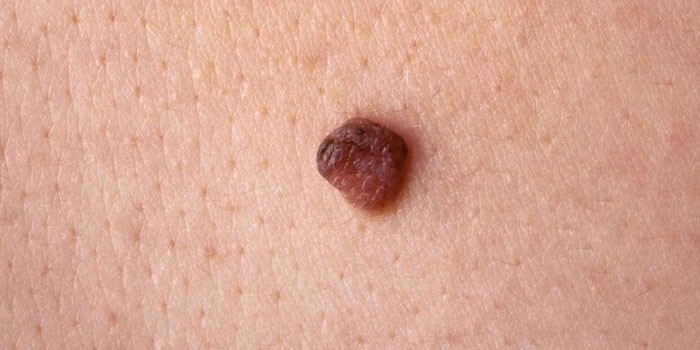
What dangerous moles look like
Several types of formations are considered these:
- Nodal. A spot with a surface of uniform color, even black.
- Blue. A dense, smooth knot without hair, rising above the surface of the skin.
- Halo nevus. A colored formation on the skin surrounded by a colorless ring.
- Skin pigmentation. Slightly convex, pale, sometimes covered with hairs.
- Gigantic. Any formation of enormous size is dangerous.
- Nevus Ota. Dark brown or gray-blue formation, very large.
- Dubreuil's melanosis. Precancerous formation with uneven contours.
If dangerous moles look as described above, then there is a high risk of their degeneration into melanoma, a type of skin cancer. It is worth noting that such a tumor is highly treatable if detected in time. You should immediately contact a dermatologist if the following symptoms appear:
- deformations;
- discharge of blood or fluid;
- symmetry violations;
- burning;
- changes in surface texture;
- pain;
- hair loss;
- itching;
- the appearance of ulcers or cracks;
- seals;
- inflammation;
- color changes, appearance of inclusions.
How to identify a malignant mole
You need to periodically examine your body in order to promptly consult a doctor if there are suspicious signals. To identify a malignant mole, use the basic ACORD rule:
- "A - asymmetry." If it is no longer the same shape, it may be reborn.
- "K - contour." Uneven, fuzzy, blurry edges are a warning sign.
- "O - shade." Any changes in color, the appearance of dots, inclusions, stripes and specks may indicate a malignant formation.
- "R - size." If it suddenly begins to grow, consult a doctor immediately. The maximum acceptable diameter for the norm is 6 mm.
- "D - dynamics." If crusts, cracks appear on the formation, or blood or any substance begins to come out of it, then you need to visit a specialist. Suspect nevi that become too soft, become covered with nodules, become painful, or are surrounded by inflamed red skin. A sudden increase in altitude is dangerous.
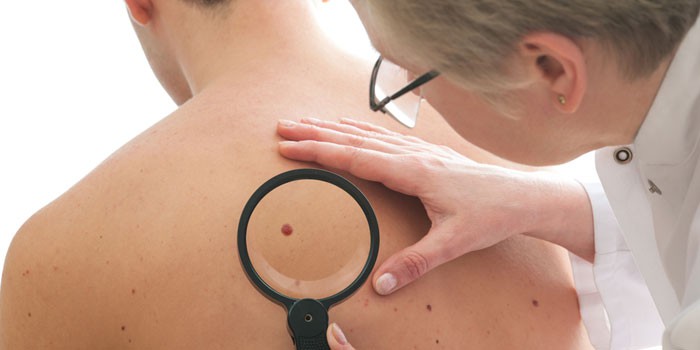
How to remove moles on the body
Dangerous and suspicious formations are removed by medical indications. Another person can remove moles on the body by at will, if they cause him aesthetic or practical discomfort (they cling to clothes, constantly get touched by nails). There are several ways to get rid of nevi: laser beam, surgery, radio waves, liquid nitrogen. Each of them needs to be discussed in more detail.
Laser removal
Very gentle and effective method destruction of formations with a directed beam. Laser mole removal can be performed using two techniques:
- Layer-by-layer evaporation. The beam gradually removes layers from the surface to the deep.
- Excision with a laser knife. The material after such an operation can be sent for histological examination.
Advantages:
- the method is absolutely safe;
- the risk of complications is minimized;
- there is no blood, because laser radiation immediately “seals the vessels;
- there are practically no contraindications;
- As a rule, one session is enough;
- painless (performed local anesthesia);
- no recovery time after surgery is required;
- non-contact technology ensures complete sterility;
- the procedure is carried out very quickly.
Flaws:
- infection may occur;
- The wound takes a long time to heal, leaving a scar.
Contraindications:
- diabetes;
- sun allergy;
- infections in the body;
- heat;
- oncological diseases;
- epilepsy;
- any skin inflammation;
- pregnancy.
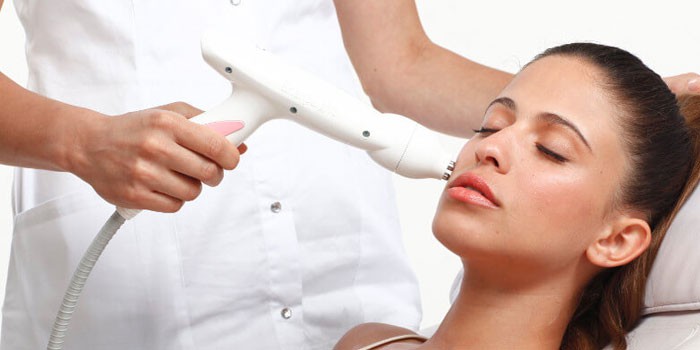
Surgical method
A very affordable method, the only one suitable when there is no possibility of alternative procedures. The surgical method is reliable and is often used for formations with suspected malignancy. The formation and a small area of skin adjacent to it are excised with an ordinary scalpel under general or local anesthesia. The material can be immediately sent for histological examination.
Advantages:
- whatever the size of the formation, it will be removed in one go;
- low price;
- relapses almost never occur;
- complete absence of contraindications;
- the method is safe.
Flaws:
- It leaves a scar though modern technology applying cosmetic stitches allows you to make it as thin, smooth and invisible as possible. In addition, the use of modern anti-scar ointments will help reduce it to nothing.
- The wound takes a long time to heal. It needs to be processed regularly and carefully.
Cryodestruction
This is the name of the process of destroying formations with liquid nitrogen. To put it simply, the mole is frozen and its cells die from the cold. Cryodestruction is performed without anesthesia at all or with local anesthesia. This procedure will be most effective for flat formations on the body that do not go into the deeper layers of the skin. Nitrogen is applied by lubricating the surgical site with a cotton swab or using a special applicator.
Contraindications for cryodestruction:
- inflammatory, infectious processes;
- pregnancy;
- malignancy of formation;
- convulsions;
- epilepsy.
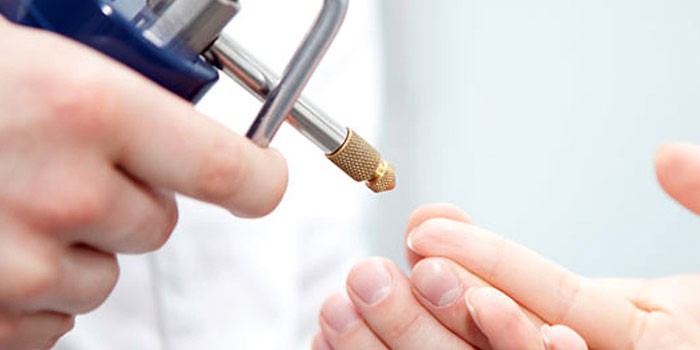
Advantages:
- removal is painless;
- the risk of complications is very small;
- cryodestruction is carried out quickly;
- the operation is inexpensive.
- the formation may not disappear completely, because nitrogen does not act on the deep layers of the skin;
- very high risk of scars;
- there is a possibility of damaging healthy tissue and causing a burn;
- at large sizes Several cryodestruction sessions may be required;
- recovery takes a very long time and during this period the use of cosmetics and exposure to the sun is prohibited.
Video: Why moles appear on the body
A mole is not always an adornment to the body; it is often a serious cause for concern. A nevus may well be a manifestation of a malignant tumor on the body.
Pigmented nevus, what is it? What causes a pigmented nevus to appear on the body?
- A pigmented nevus is popularly simply and clearly called a “mole.” It is a neoplasm on human skin, which is most often benign. Inside the cells of the nevus there is a special coloring pigment, which gives color to the skin area
- This pigment is capable of being transmitted from cell to cell through special processes. There are also moments when pigment transmission becomes disrupted. Unfortunately, the reasons for this are still unknown. In this place you can notice a changed appearance of skin cells, which are distinguished by an even higher pigment content
- A pigmented nevus is quite capable of appearing on absolutely any area of the skin in the form of a speck or nodule. The color of his cells is much darker natural color koi and therefore the nevus immediately becomes noticeable. The color of a nevus depends on how much pigment (it’s called melanin) is contained in the nevus.
Pigmented nevus is a kind of spot on human body(or nodule), which is a shade of yellow or brown and is made up of cells.
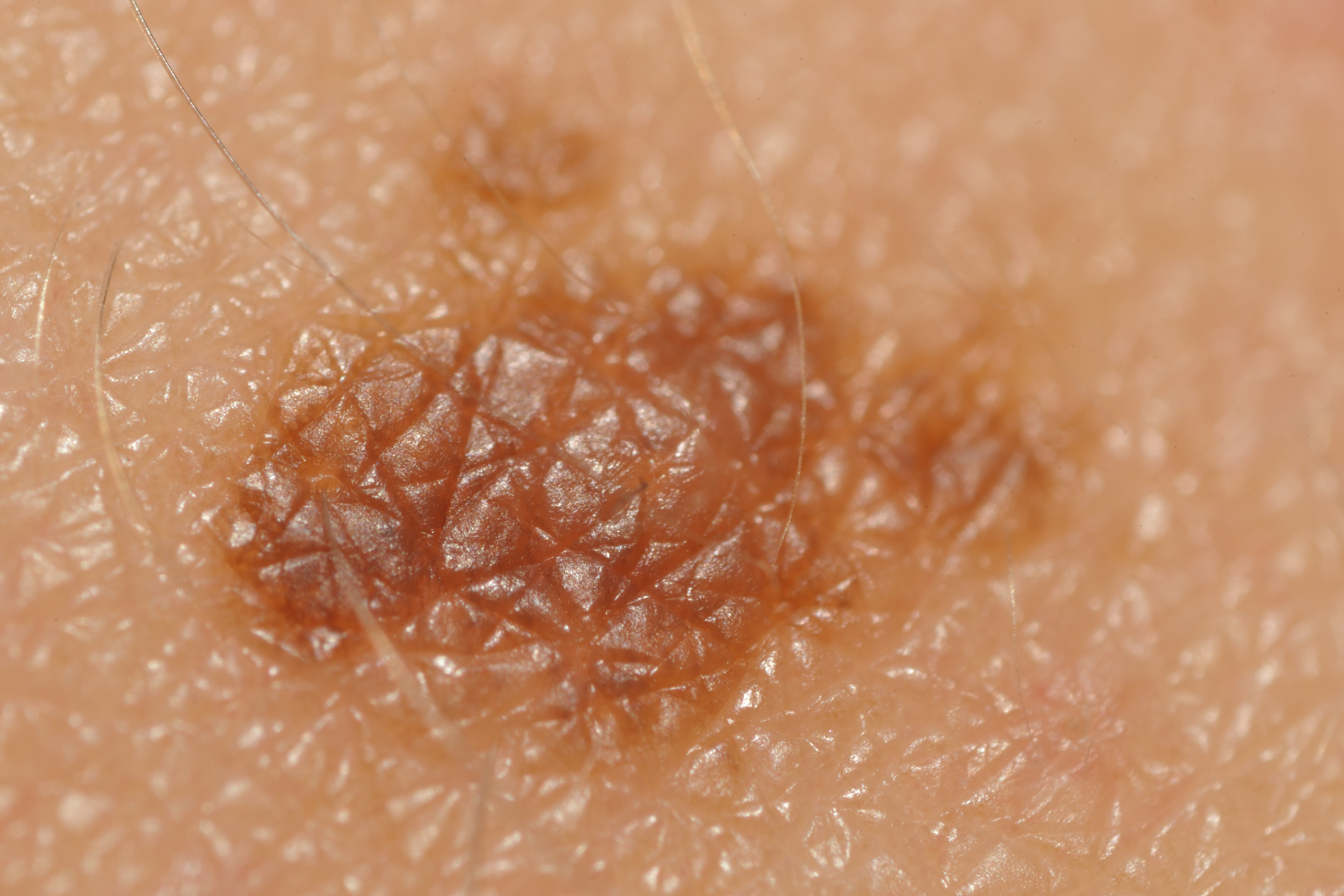
pigmented nevus
Pigmented nevus tends to appear on the human body with age. A newborn baby does not have a single mole or birthmark after birth. However, it is worth noting that even when the child is in the womb, even then his predisposition to the appearance of moles and spots on the body is laid. However, there are factors that can also influence the appearance of moles in a person throughout his life:
- hormonal disorders, in particular surges in progesterone and estrogen levels in women
- infectious diseases, especially in women during pregnancy
- human heredity and genetic predisposition
- influence ultraviolet rays on human skin
- effects of toxic substances on human skin
Any of these processes occurring in the human body leads to various disorders, which lead to the accumulation of this pigment in the cells.
The main reasons for the appearance of moles on the body and face
As already mentioned, a person is born without a single pigment spot, and only with age does his predisposition appear on the body in different places various moles appear. It is worth noting that the majority of moles on the human body appear when a person enters adolescence. It has been noticed that moles can both appear and disappear from the body. The nature of their behavior has not yet been 100% studied. In addition to the fact that they appear, they also increase in size, grow and even die.
If you notice abnormal behavior of a mole: too much growth, coarsening, enlargement, change, itching and even peeling, you should definitely consult a doctor for advice.
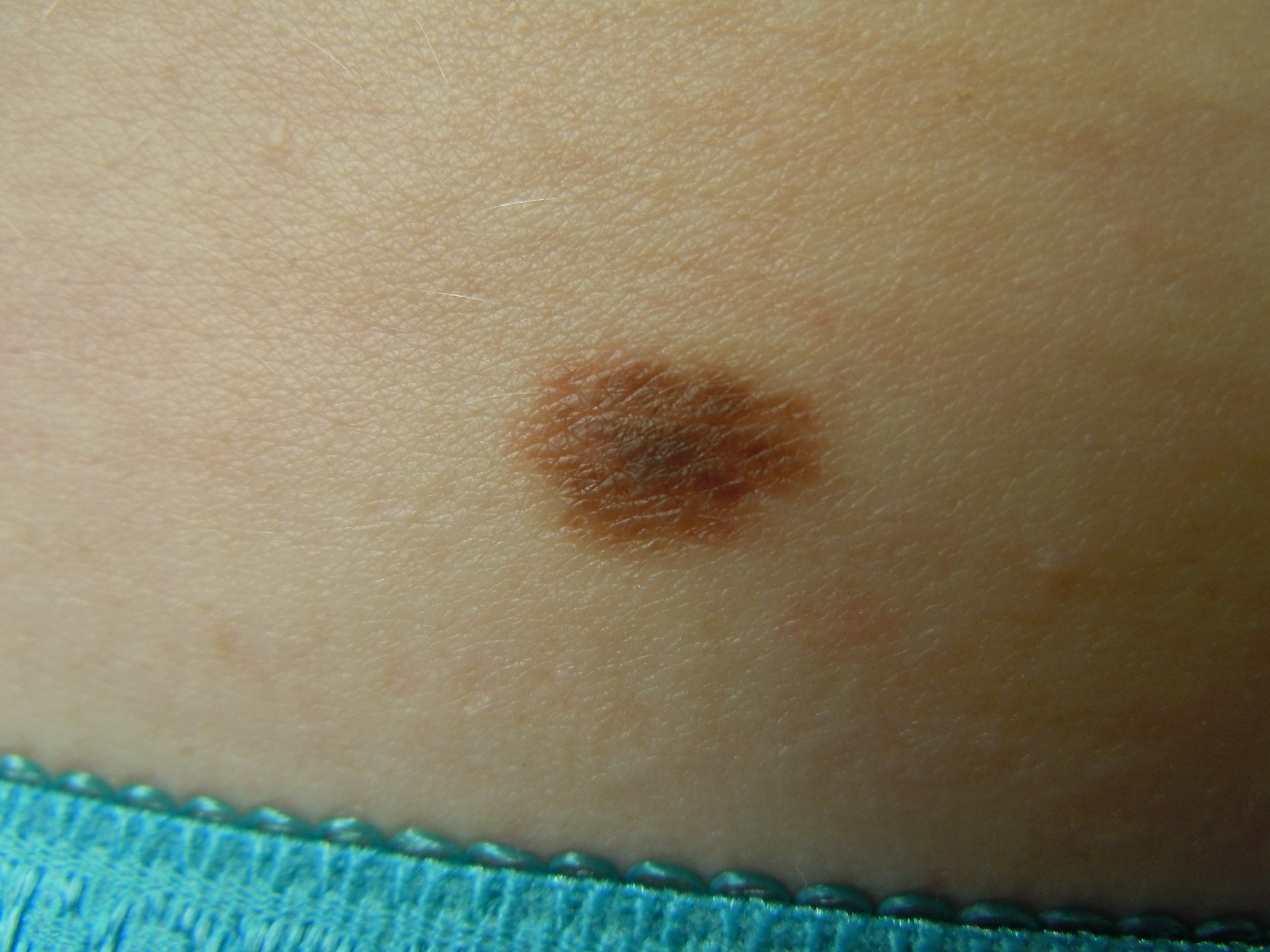
pigmented nevus on the body, behavioral features
The appearance of moles on the body does not have any specific time limits, but their most frequent and large-scale occurrence still occurs before the age of twenty-five. Having noticed a mole on your body, do not rush to panic, carefully monitor its behavior, because it is quite capable of disappearing over time. The appearance of moles is not at all accidental; they arise only because their appearance is embedded in the DNA of every person. Therefore, it is not surprising that children can have exactly the same moles as their parents in the same place.
Why do red moles appear?
To understand why moles appear on the body, you should consider each cause in detail:
- Moles appear from the sun. Ultraviolet, which is the basis of sunlight, can really influence the appearance of moles on the body. Specifically speaking, it promotes the production of melanin by the skin, and melanin, in turn, is the basis of moles and age spots, as well as birthmarks. It is worth noting that any mole that is exposed to sunlight is quite capable of turning into a malignant tumor. It is for this reason that people with a large number of moles on the body are not recommended to stay in the sun for a long time and sunbathe on the beaches.
- Mole as a consequence. First of all, as a consequence of radioactive radiation, such radiation can include radiation and even x-rays. But many doctors also claim that a mole may well appear on the body as a consequence of a virus, infectious disease, a bite of any insect with a long healing of the wound. These processes are nothing more than the reaction of the body in which the surface skin grouped melanocytes protrude
- As a consequence of hormonal imbalance. Doctors say that moles form on the body as a consequence of a hormonal surge. It is for this reason that women who are pregnant and breastfeeding a baby may notice the numerous appearance of moles on their body. Moreover, during puberty, in adolescence The hormonal formation of the body also occurs and therefore an abundant appearance of pigmented marks on the body is noticed
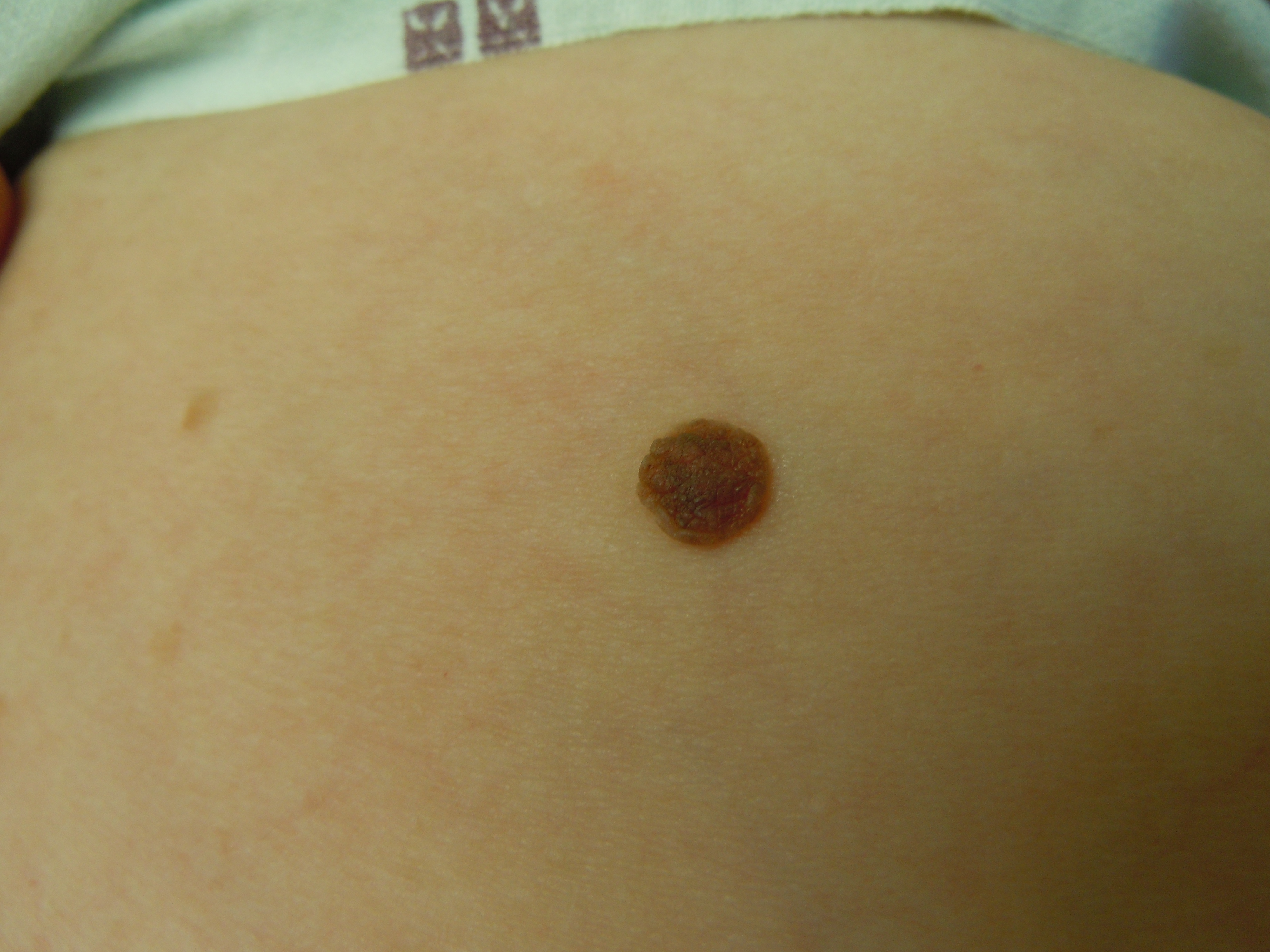
volumetric nevus on the body
Red moles on the body: a signal of what diseases?
Age spots and nevi that appear on the body are quite normal occurrence It does not require any serious medical intervention for each organism.
However, there are some moles that may bother some people. Thus, it is believed that a red mole that appears on the body is a signal of a disease, moreover, a dangerous and undesirable one. To understand this issue, it is worth studying the reasons for the appearance of such moles.
A red nevus is not a reason to panic and attribute health problems to yourself. A red mole is a place where numerous capillaries and small vessels have accumulated. This accumulation forms a small bundle, which performs its important function - it supplies the epidermis with oxygen. Other reasons for the appearance of red nevi on the body are:
- surge of hormones or any hormonal disorder in the body
- consequence of skin damage due to any mechanical impact
- consequences of pancreatic diseases
- consequences of cardiovascular diseases
- consequences of ultraviolet exposure
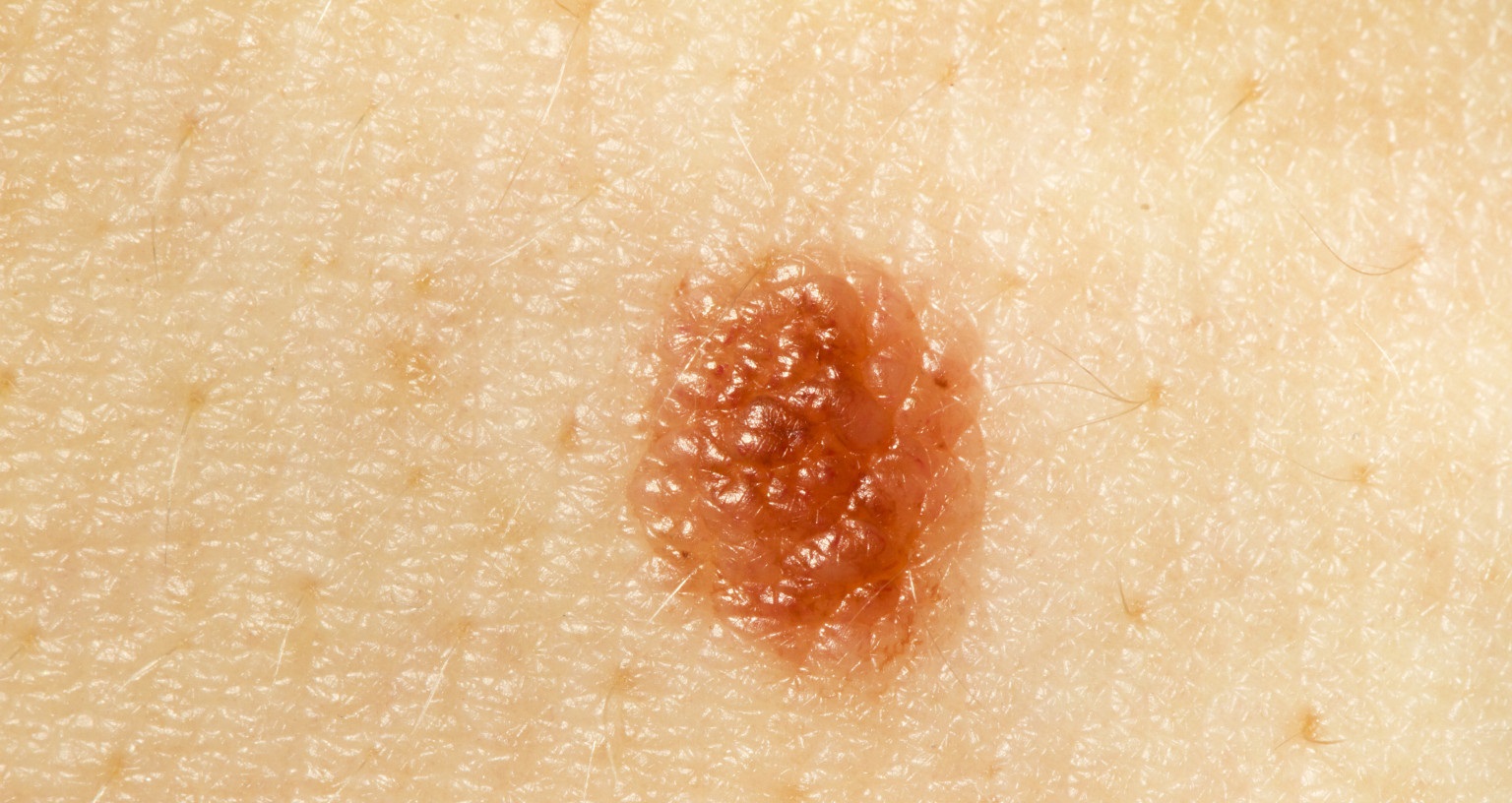
red nevus on the body
A red mole on the body is a serious reason to worry only when it is capable of changing its pigmentation when pressed.
Pay attention to a red mole only if you notice the following features behind it:
- a strong increase in the size of the nevus in a short period of time
- pain at the location of the nevus
- if the nevus is capable of bleeding or leaves other discharge
- if there are several red moles in one place at once
If several red moles are located very close to each other, this may indicate that you have a serious cancer. In this case, you should not delay your visit to the dermatologist; he will be able to recommend to you which moles are safe and which should be removed.
Which moles are dangerous?
A mole is a kind of skin defect that appears as a person grows older in different parts of the body. Their appearance can be explained by heredity, as well as other factors. Not every mole is safe, and therefore it is worth knowing exactly which ones are harmless and which ones indicate the presence of a disease.
It is also worth noting that birthmarks of different pigmentation may be present on the body, and all of them are the result of the action of some irritant on the skin, for example, ultraviolet radiation. Each person has their own sensitivity and individual characteristics body. That is why it is worth saying that stimuli have different effects on different people.
A professional dermatologist will always be able to visually determine which moles are dangerous and which are not just by their external condition. However, there are situations when a person seeks advice already too late. You should not take your health lightly, because sooner or later any pigmented neoplasm on the skin can turn into a tumor, and a malignant one at that.
If your mole has a simple speck shape, it is round and has a clear outline - it is a safe nevus that does not require concern. Such moles can be any color of brown shades or even completely light.
You should examine and do visual diagnostics of your moles regularly. This is necessary in order to monitor the degeneration of moles, since any nevus, even the most harmless one, can eventually degenerate into a malignant neoplasm. For those who don’t know much about how this is done, a fairly simple system is proposed, which is called “ACORD”:
- A involves looking for any asymmetrical deviations, that is, its abnormal shape. The only exception can be birthmark that you had from birth
- TO involves visual inspection edge your mole: whether it is smooth or embossed, whether the mole is degenerating or not
- ABOUT involves regularly monitoring color of your mole or spot, look for different spots on it or a complete change in color
- R assumes that you will study regularly size your nevus and if you notice any abnormal growth, consult your doctor
- D assumes that you will regularly examine your nevus and respond to the slightest changes, as well as to their dynamics
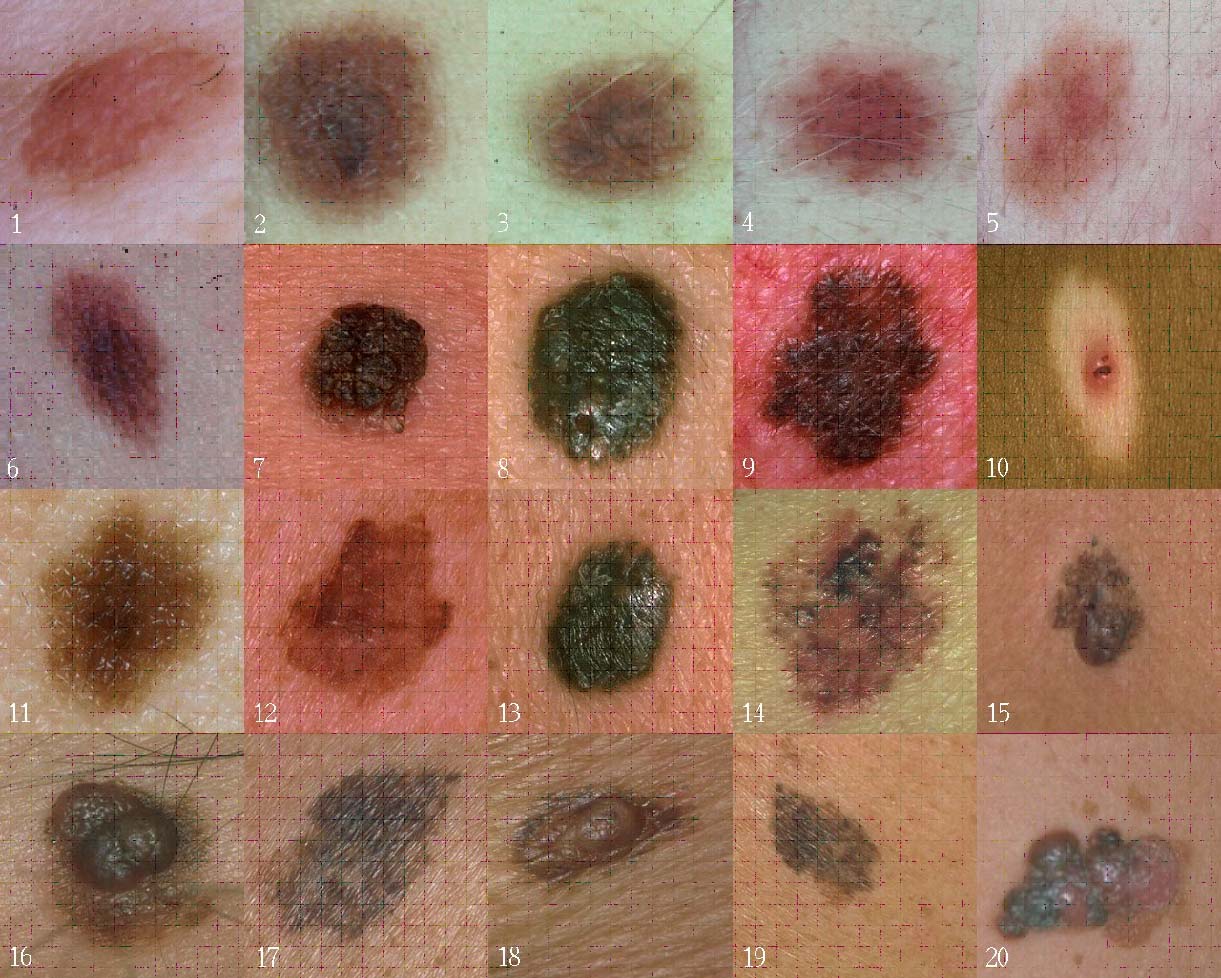
examples of malignant moles
It’s not worth removing moles for the sake of prevention; best prevention— promptly consult a doctor if problems are detected. Beauty salon, unlike medical institution will not be able to provide you with the assistance you need.
Why does a person have many moles?
- As mentioned earlier, a large number of nevi on the body is most often explained by the fact that a person is exposed to abundant ultraviolet radiation, which in turn provokes the production of melanin by the skin
- If there is too much melanin in the body, it begins to appear visually on the skin in the form of moles.
- There is an opinion that if a person has a large number of moles on his body, then he is more predisposed than all other people to cancer
- In particular, such a person has a high risk of developing melanoma - skin cancer. It is for this reason that such people are advised to be extremely careful and rarely stay on sunny beaches, sunbathe and sunbathe.
- It has been noticed that people who have many moles on their body suffer hormonal disorders body. For the same reason, a large number of moles appear on a woman’s body during pregnancy and breastfeeding, when she constantly feels surges of progesterone and estrogen
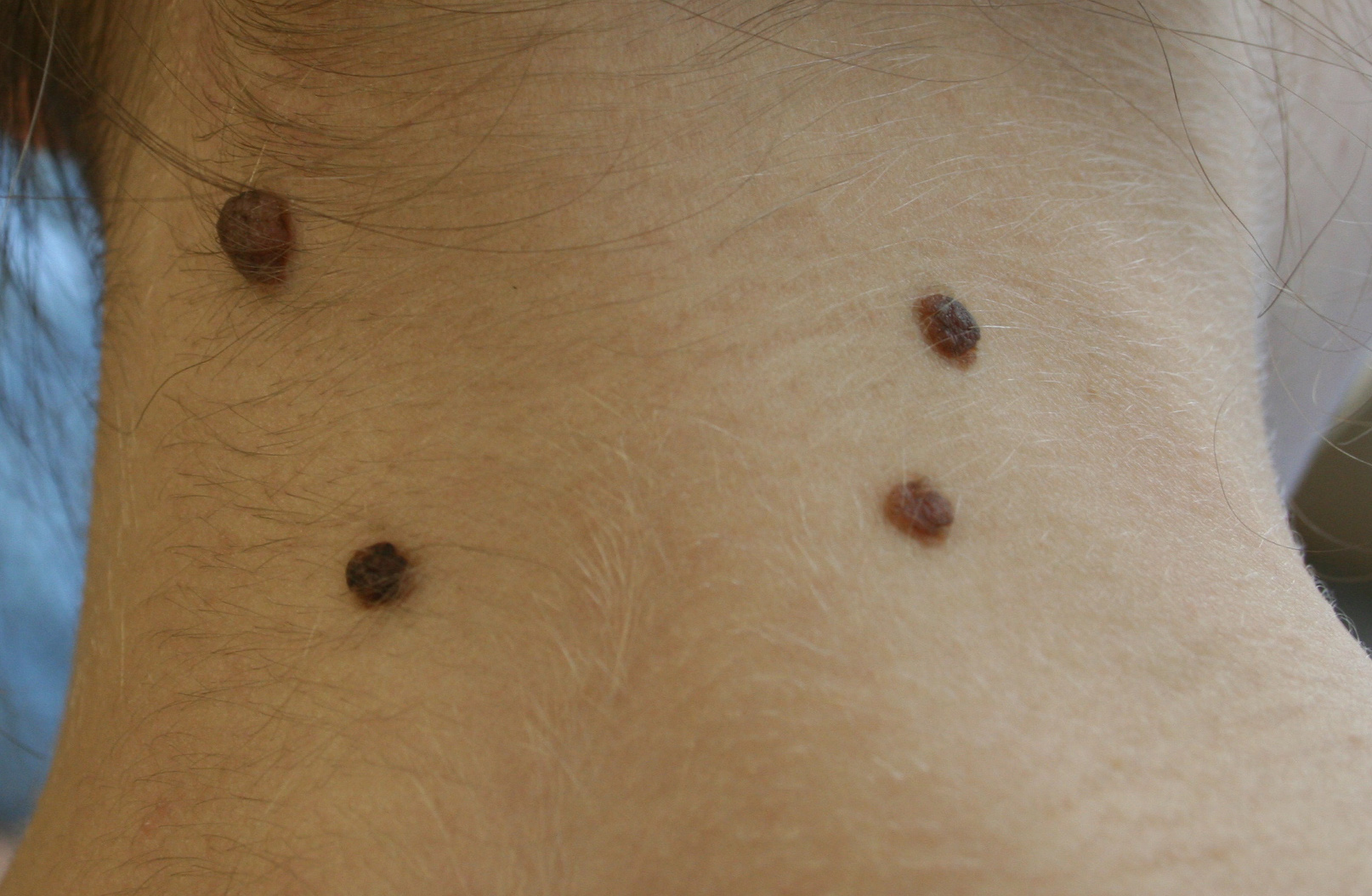
a large number of moles on the body
When do moles appear and are they dangerous in children?
Nature arranges it this way that a newborn baby is born completely “clean” of moles and birthmarks. All the moles that are bound to appear on his body appear only after a while. It is impossible to avoid this; all moles and pigmented nevi on the body are embedded in DNA and appear as the child grows up.
The first mole on a baby’s body can be noticed somewhere around the age of one year, plus a couple of months. But the massive appearance of nevi still occurs while the child is growing up, namely in adolescence. It is at this time that his hormonal system is adjusted.
There are exceptional cases when a baby is born with marks on the body. This may be explained by the child's genetic predisposition. During the process of its growth and development, the number of moles on the body can either increase or decrease.
As a rule, a child can be born with a completely flat mole, flush with the skin. Such moles should not cause either doubt or panic. Constant monitoring of the baby’s moles can allow parents to identify a malignant tumor in time and eliminate it. You should pay attention to moles if they:
- convex
- with uneven edges
- change shape
- change the structure
- change color
It is also worth paying attention to large age spots, because in more than 40% of cases such birthmarks can develop into serious skin diseases.
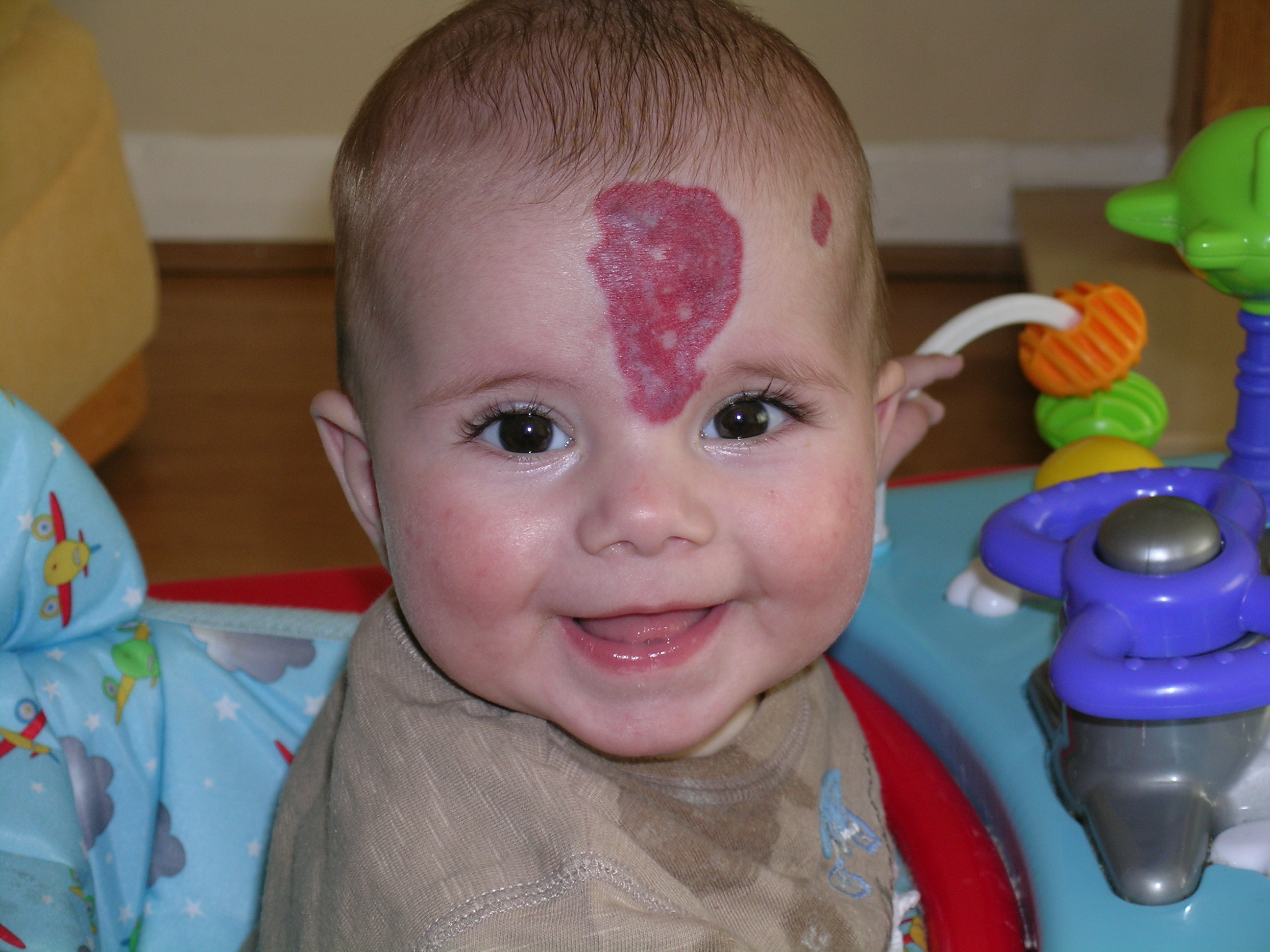
moles on a child
If you notice a suspicious nevus on your body, which doctor should you contact about the mole?
Oncological diseases have recently filled every part of our world. People are increasingly “sounding the alarm” with or without reason, finding suspicious growths on their bodies, feeling unwell, and having bad tests. All this contributes to contacting a doctor who can somehow help in such situations, exclude the possibility of cancer, or try to cure it.
A suspicious mole on the body can become a malignant tumor that affects the skin areas of the body. It may not bother you at all, but it may regularly “make itself felt”: hurt, itch, grow and even bleed. If you do find a strange nevus or spot on your body, you should contact a professional doctor to help you.
Not every mole can indicate that you have melanoma. If there is no specialized diagnostic clinic in your city, then you can consult a simple general practitioner for advice. This is a “universal” doctor who can advise you on other specialists and prescribe necessary analysis, as well as conduct an important first inspection.
A dermatologist will be able to examine the mole and give you a clear answer as to what kind of neoplasm it is: malignant or not. He will be able to do a dermatoscopy, that is, scrape off a certain amount of the mole and submit it for an accurate analysis, which will give you the answer.
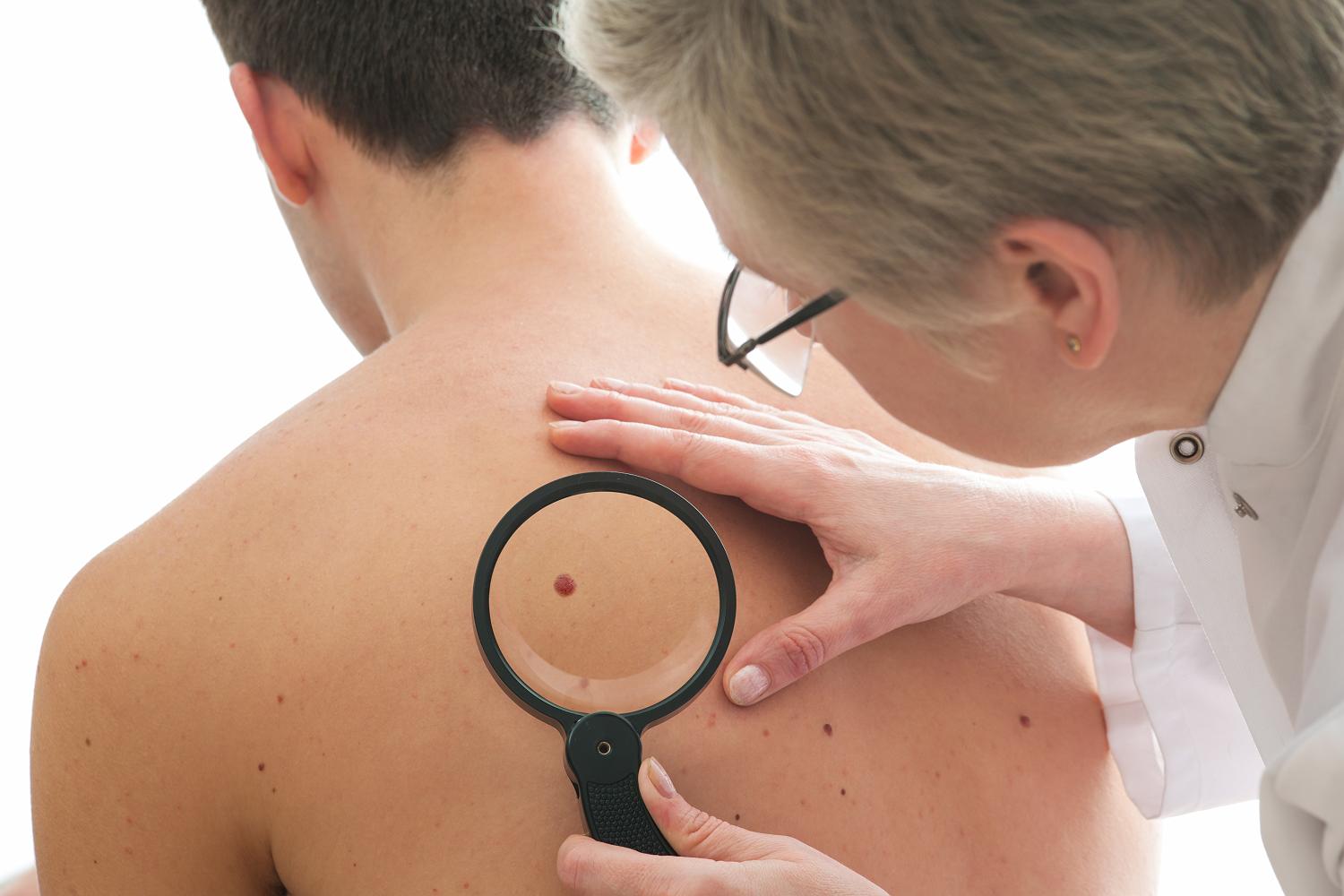
dermatologist examining a mole
What to do if you rip off a mole?
There are situations when you can accidentally damage a mole with some mechanical force and simply rip it off. Fortunately, if this mole is ordinary, it does not pose any danger. However, if the mole is malignant, then by its nature you can get negative consequences.
If you do comb a mole or scratch it, you should take the following steps:
- immediately treat the damaged area with hydrogen peroxide
- then treat the damage with medical alcohol
- Chlorhexidine can be used as a disinfectant
- limit the location of damage from ultraviolet radiation
- if the damage is not small, but rather large, you should consult a doctor
If it happens that the mole has completely come off the skin, then it does not need to be thrown away. It is best to take this area of skin for examination.
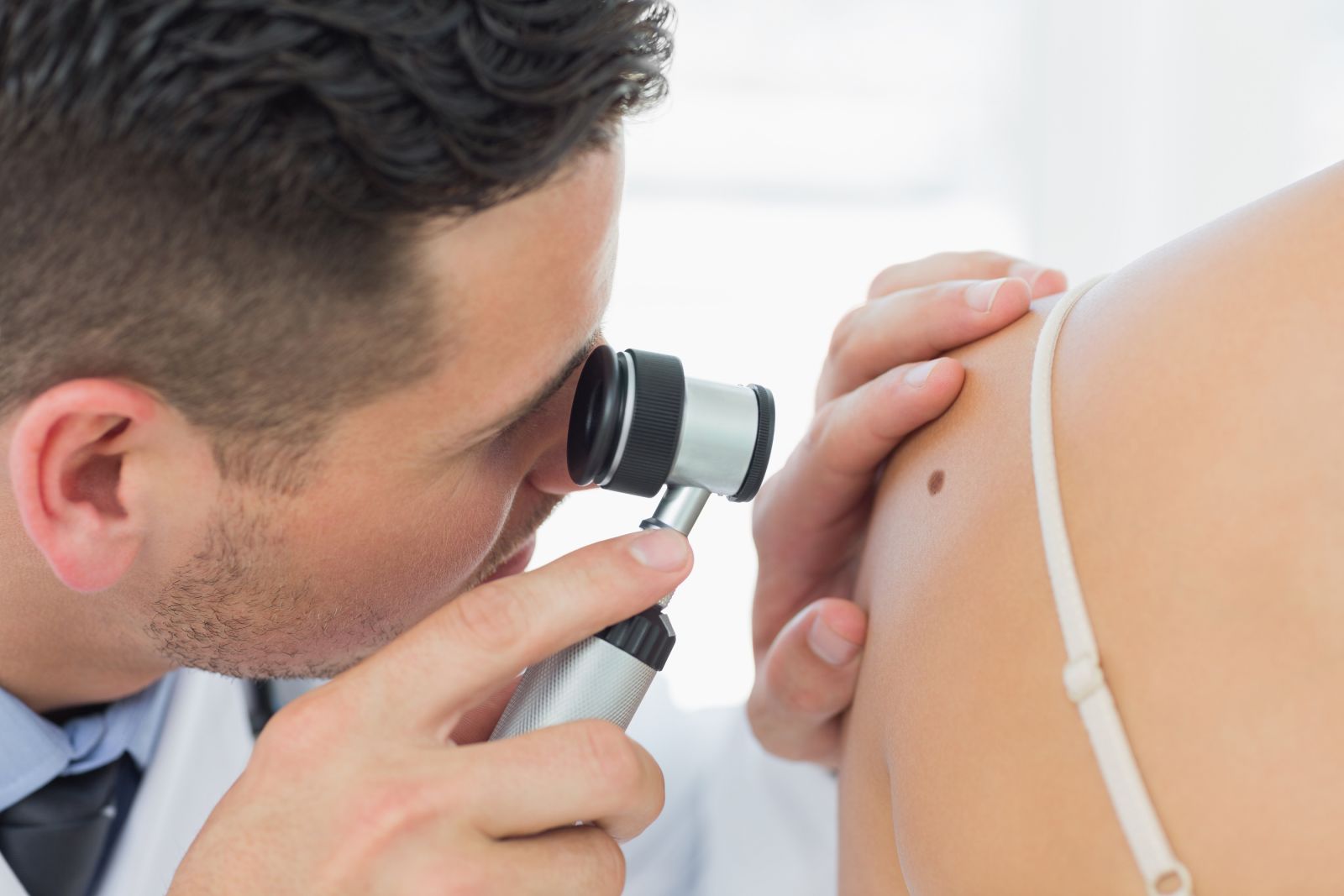
mole examination
Why do moles grow?
First of all, the growth and appearance of moles is genetic in nature, that is, if your parents are predisposed to this, then it is quite possible that you will suffer the same fate. The same applies to birthmarks on the body; they can appear in exactly the same places as your parents. It is impossible to avoid the appearance of a mole. You can only weaken or moderate their appearance if you regularly avoid ultraviolet radiation from the Sun.
To understand why too many moles appear on your body, you should do a detailed hormonal blood test, because it is quite possible that this is happening because you have problems with your hormonal levels.
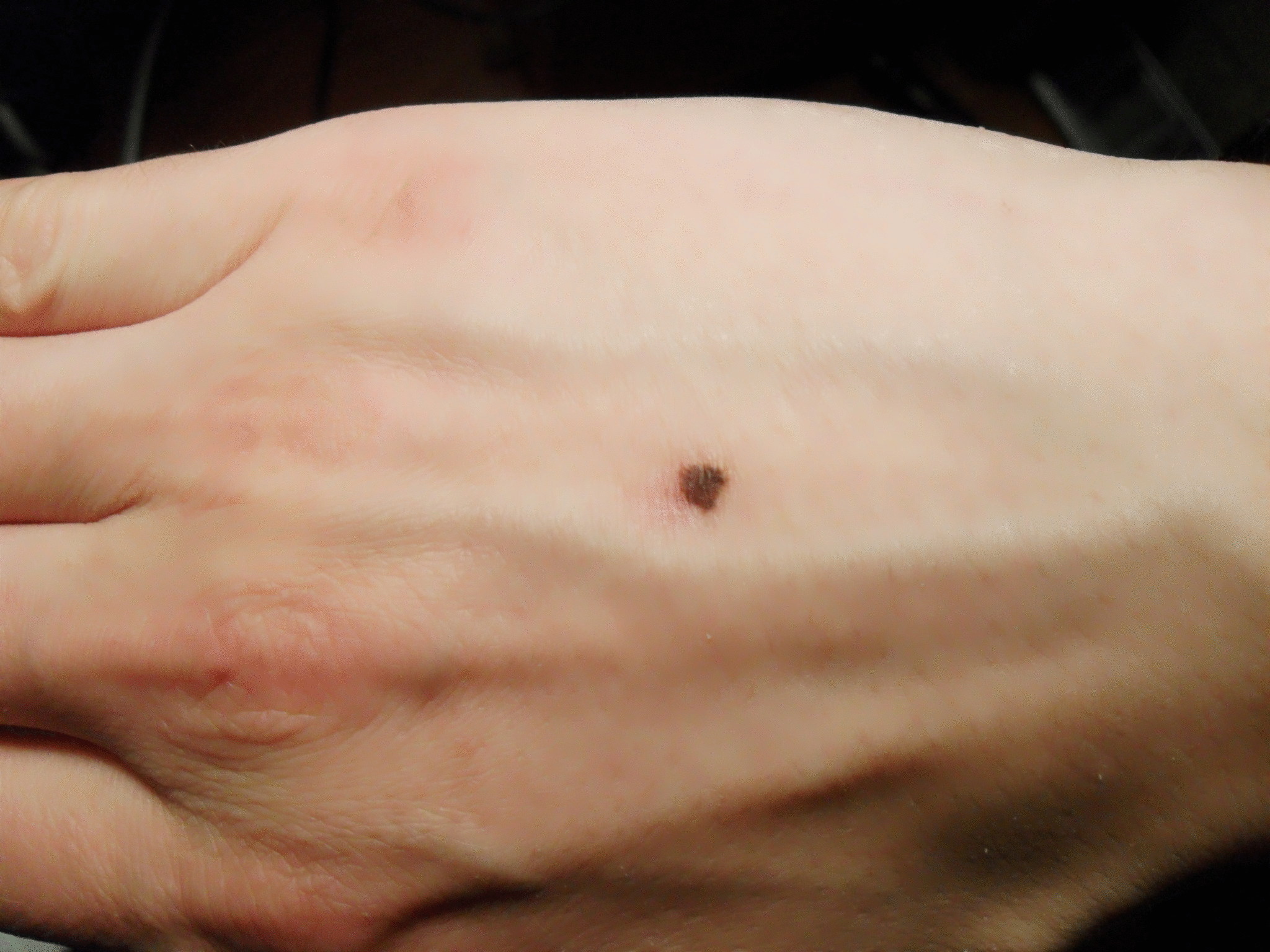
growth of moles on the body
A mole is inflamed, hurts and itches: what to do?
An ordinary normal mole without any signs of malignancy should not hurt, itch, bleed, increase in size or change its texture. If you feel that a mole is “making itself felt,” this can happen for several reasons:
- clothing acts as an irritant on a mole
- the skin at the site of the mole begins to peel and itch
- the mole began to grow and itching appeared as a result of active cell growth
- a mole develops into a malignant one
- the mole has been damaged: scratched or scratched
- mole succumbed to strong exposure to ultraviolet radiation
If you experience itching at the site of a mole, then under no circumstances should you scratch it. If you eliminate the itching and scratch, you can, firstly, damage the mole, and secondly, increase the sensation. Try to remove discomfort only by calmly stroking the mole with your fingertips. Only the professional doctor, therefore, immediately if unpleasant symptoms appear, consult a doctor.
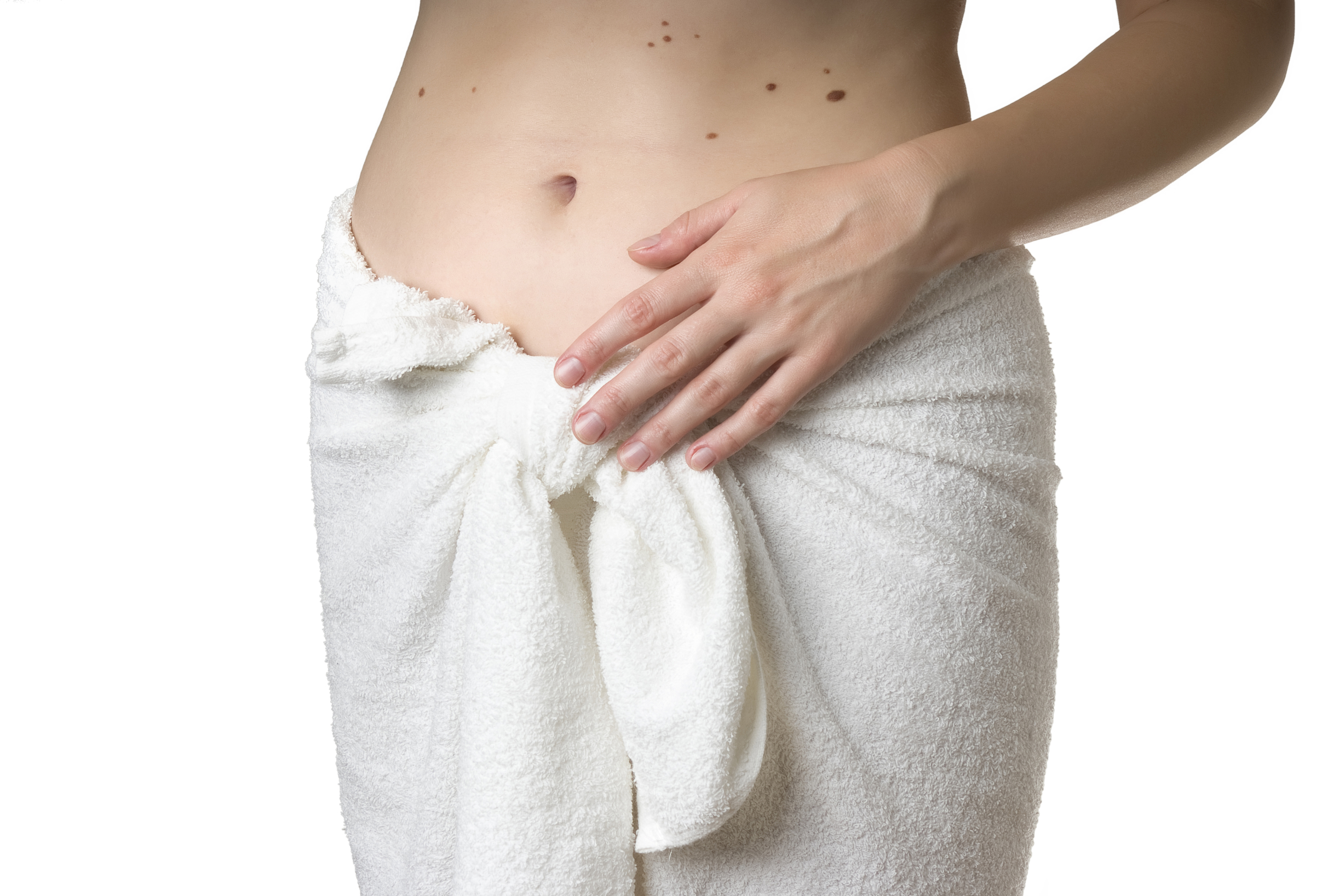
itching of moles on the body
Is it possible to get a tattoo on a mole?
A pigmented nevus on the body does not always have a pleasant and neat appearance, so if it is very large, people often get complex and try to hide it somehow. Not rare modern man resorts to decorating the body with tattoos. It's simple and easy way decorate your body by hiding flaws. The question arises: is it dangerous to apply a tattoo to a mole or birthmark?
It is worth saying that getting a tattoo is in itself a dangerous undertaking, fraught with the introduction of a dangerous virus or disease into the body. If we talk about moles, these are the most sensitive areas of the body, which are very susceptible to any damage: physical and mechanical. For those whose body is covered with an abundant layer of moles, they are most often advised to refrain from this procedure, because this is a big risk of losing not only beauty, but also health.
A tattoo on a body that is heavily covered with moles becomes an even more dangerous decoration if it is regularly displayed and exposed to ultraviolet rays.
Reasons why you should not get a tattoo on your body:
- high sensitivity of moles
- risk of mole damage
- chance to get allergic reaction from applying a tattoo in the place where a mole grows
- chance of not noticing the transformation of a mole into a malignant formation at the tattoo site
- exposure to paint components can trigger the development of melanoma on the body
Along with the fact that applying a tattoo to a mole is very dangerous, it is also dangerous to remove it, because this can lead to a complete loss of pigment, or to its abundant accumulation.
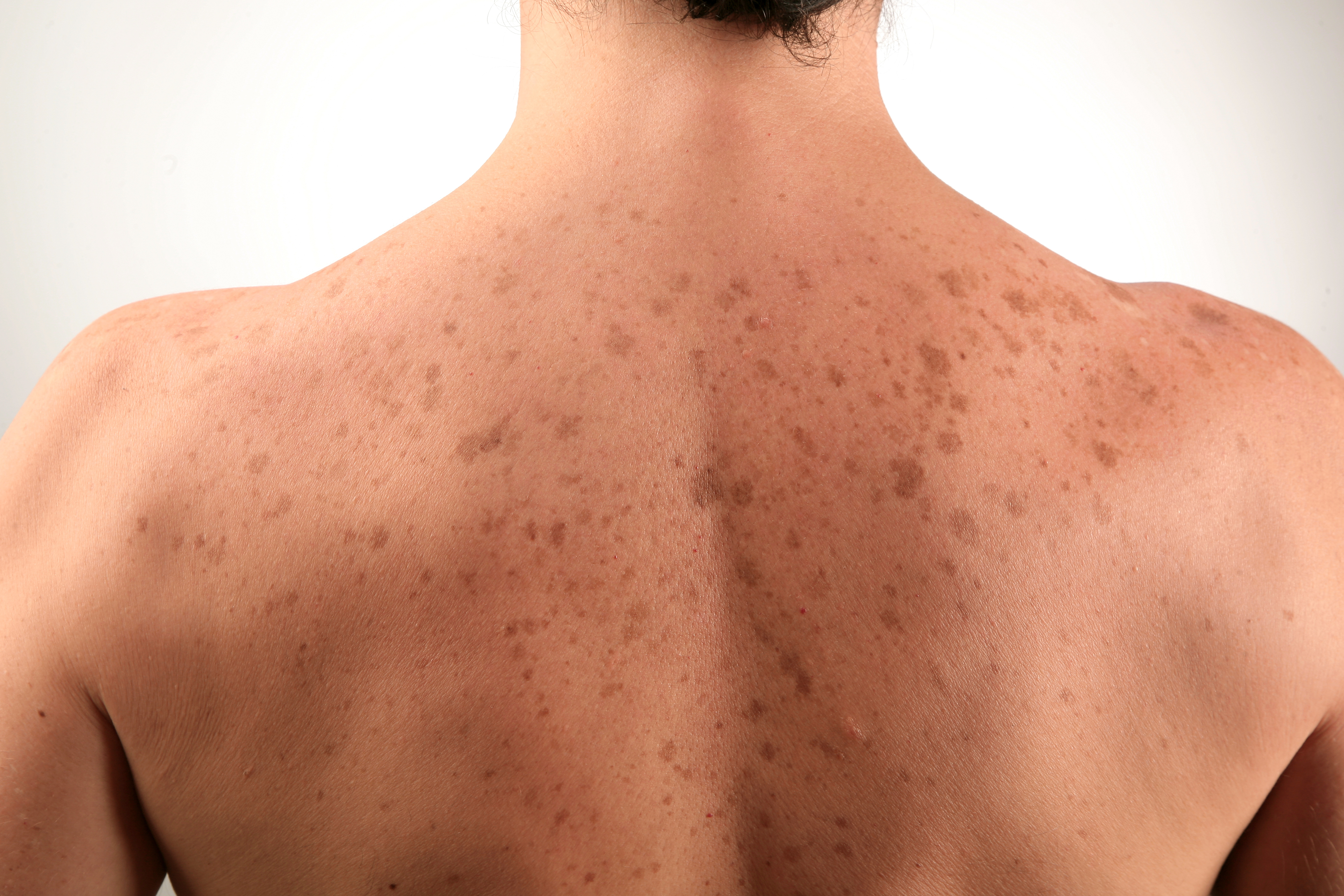
tattoo on moles
How to remove moles?
Mole removal can only be done through surgery by professional doctors. It is impossible to do this on your own. In a professional center or clinic, moles are removed quickly and easily, without any pain and unpleasant consequences. Most often, a mole is removed because it does not meet aesthetic considerations, or because it regularly causes inconvenience by clinging to clothing or hair.
Sometimes a mole is removed because it is too large. The doctor may advise removing the mole due to the fact that it can degenerate into an unwanted and malignant neoplasm.
Before removal, the mole must be examined and dermatoscopy done to exclude its malignant nature. There are several ways to remove a mole:
- removal with nitrogen - a procedure called “cryodestruction”
- surgically - through micro surgery
- by electrical stimulation
- laser therapy
With exactly the same treatment methods, in our country 95% of skin cancer cases are fatal, and in the USA and European countries - 5%.
Do you know why? The question is the timing of diagnosis. It is very, very important not to miss the moment when a harmless speck turns into a mortal threat.
Where do moles come from? Or a little from the life of our skin
Moles (“nevi” in scientific terms) are small benign tumors. The first ones can already be found at one year old child, but most of them appear on the body by the age of 25.
Moles appear “thanks to” the local concentration of melanin pigment. If the formation is flat, then the pigment has accumulated in the epidermis (upper layer). If the melanin has gone deeper into the dermis, then the nevus may protrude somewhat above the surface of the skin.
The main reasons for the appearance of nevi
- Sun. The longer we are in the open sun, the more our DNA “breaks down”, and the higher the likelihood that new moles will appear.
- Hormones. During puberty, as during pregnancy, the pituitary gland actively produces hormones. Among them are those that contribute to the concentration of melanin in tissues.
- Predisposition. You've probably noticed more than once that relatives have the same location of moles on the body and their shape? Of course, this will be the case, because the information embedded in DNA is passed on from generation to generation.
- Viruses and injuries. By injuring a nevus, we risk introducing it into the skin viral infection. Some of them can provoke the reappearance of moles on the face and body.
The color of moles normally varies from light brown to black, and their location is influenced by many factors.
Sometimes nevi disappear on their own. This usually happens due to intense sunburn and can become a harbinger of another skin disease - vitiligo.
In what cases do nevi pose a potential health threat?
Moles on the body are a completely natural phenomenon, safe as long as they do not degenerate into melanoma. And this is already a malignant tumor.
 Melanoma is made up of melanocytes, the same cells that make up nevi. The difference is that melanoma cells begin to actively divide. Over time, they crowd out other cells, then become crowded on the body, and they penetrate into the bloodstream, and from there into the lungs, brain and other internal organs.
Melanoma is made up of melanocytes, the same cells that make up nevi. The difference is that melanoma cells begin to actively divide. Over time, they crowd out other cells, then become crowded on the body, and they penetrate into the bloodstream, and from there into the lungs, brain and other internal organs.
This is how metastases appear, which are very, very difficult to fight.
At the same time, superficial melanoma is effectively removed without any consequences. It is important, as already written, not to miss the moment.
Reasons for the degeneration of moles into malignant formations
Why does a mole “wake up”? There may be several reasons:
- genetic inheritance;
- sunburn received in childhood;
- the presence of “borderline” moles.
What are the chances of developing melanoma?
You are at risk if:
- one of the relatives suffered from melanoma;
- as a child, you regularly got sunburned;
- you have a formation that is dark in the center and lighter at the edges;
- you suddenly have a lot of moles in places where there were none before.
“Borderline” moles are called “dysplastic nevi” in medicine. They signal that there may be problems. But not necessarily in this particular nevus.
How to check moles yourself?
You cannot diagnose melanoma yourself. But finding out whether there is a reason to turn to specialists is quite possible. Conduct your research in late spring and late summer so you can see the dynamics.

You can choose those that seem atypical to you, not similar to the majority in shape or size. Look carefully, slowly, in good lighting. You may also need a magnifying glass.
Did you see the changes? Are moles appearing quickly? Let's run to the doctor!
We especially want to emphasize that the active appearance of new moles on the body of an adult in the absence of other factors (such as hormonal imbalances, for example) is a very alarming signal!
Which specialist should I contact?
It is best to visit a dermato-oncologist. He will conduct additional diagnostics and decide whether there are indications for removing the nevus. You can also undergo examination in specialized centers or offices.
If a dermato-oncologist is not available, see a dermatologist or surgeon. remember, that early diagnosis- the key to successful treatment! Also keep in mind that problematic moles cannot and, moreover, are extremely dangerous to remove using folk remedies!
Traditional bandaging with thread, rubbing in dubious ointments and other amateur activities can end very badly: from the uncontrolled appearance of moles in large quantities before infection and degeneration of the problematic nevus into a tumor.
In what places is it best to remove moles?
It is difficult to predict the appearance of moles on the body, but you can control their location.
As a rule, nevi that are at constant risk of injury are located:
- in hair;
- on the back of women, in the place where the bra is fastened;
- on the face, chin and neck in men (can be touched when shaving);
- in the groin and other skin folds;
- moles on the “leg” (can come off if handled awkwardly).
Removal of moles on the body is possible only after consultation with a doctor. For young children, this procedure can only be performed for strict medical reasons.
How is deletion done?
Get rid of potential dangerous mole can be done using one of the following methods:
- Evaporation (vaporization) with laser. After this procedure, not a trace remains on the skin, which is bad. Even a removed nevus must be examined for the presence of cancer cells.
- Laser cutting. This method allows you to examine the formation, but it causes a burn at the site of the mole. Then the burn becomes a fairly noticeable scar.
- Radio wave removal. This method can only remove small nevi on the body. And again, there will be nothing left of it for analysis.
- Cutting with a scalpel (excision). Perhaps the most optimal way to combat moles. It allows for exploration and leaves a more aesthetically pleasing scar than laser cutting. Over time, the scar on the skin becomes completely invisible.
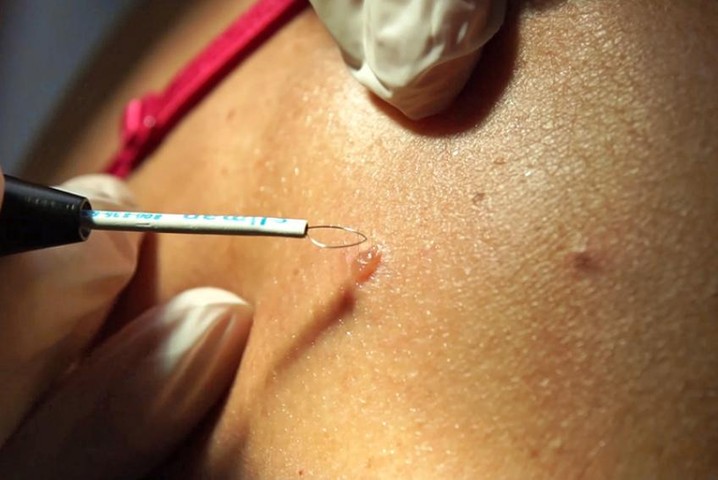 By the way, if hairs grow from a mole, this is good sign. It indicates the maturity and stability of cells. It is better not to pull out these hairs, but to cut them off, so as not to injure the skin.
By the way, if hairs grow from a mole, this is good sign. It indicates the maturity and stability of cells. It is better not to pull out these hairs, but to cut them off, so as not to injure the skin.
How to avoid being at risk for melanoma?
Here are a few more simple rules. It is not difficult to comply with them, but the price of the issue is nothing less than life.
- Avoid being in the hottest sun (from about 11 a.m. to 4 p.m.) in the summer. Ultraviolet rays from the sun provoke changes in our DNA. And this is already a direct path to cancer. If you have many moles on your body, it is better to avoid sunbathing altogether.
- Don't rely on sunscreens. They protect the skin from burns, but not from exposure to ultraviolet radiation at the cellular level. Remember: sunscreens do not reduce the risk of new moles and the development of malignant tumors on the skin!
- Try to wear loose-fitting cotton clothing on hot days.
- Do not visit the solarium. A 10-minute session in it is equal to a day in the open sun.
- Do not cover moles with a band-aid. Otherwise, you will create a breeding ground for viruses and bacteria.
- Keep an eye on your children and make sure their exposure to the sun does not cause sunburn.
- Examine your nevi regularly and consult a doctor at the slightest change.
Now you know the reasons why moles appear and methods of combating such a terrible disease as skin cancer. Don't forget to follow simple rules prevent melanoma and take care of yourself!
Where do new moles come from?
There is nothing scary or frightening about the appearance of moles, but there are many mysteries. For example, not everyone knows why moles appear, where they originate and how they develop. In fact, this is very interesting, just like the fact that moles can be completely different; in fact, there are no exactly identical nevi on the body - this is a fact! So, moles first appear in the first or second year of life, although some people are born with birthmarks that are visible immediately or appear by 1-2 months. Moles are most often divided into:
- Vascular and non-vascular,
- Melanoma-hazardous and non-hazardous.
With age, the number and visibility of moles increases, although many have long believed that moles are spots with which they were born. The main rash of moles appears during hormonal disruptions, such as pregnancy, stress, illness and, of course, puberty in adolescents.
Vascular moles are a collection of small blood vessels, hence the color of moles, which can be either light pink or bright red. Moles of this type They can be either flat or convex, but they have one feature: these benign neoplasms do not develop into malignant tumors, i.e. are melanoma-free.
This cannot be said so easily and beautifully about non-vascular (ordinary) moles. They are easy to recognize - they can be small or large, convex or flat, but they can be identified by their color - from light brown to black. Such moles are melanoma-dangerous, although degeneration of a mole into a malignant tumor is rare. In fact, non-vascular moles are the cells of our skin, where a lot of pigment is accumulated; they are only formed due to melanin. Birthmarks that appear immediately after the birth of a child are considered congenital skin defects, the rest are acquired tumors.
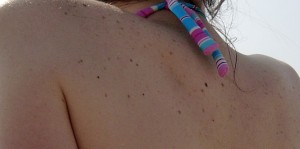
So, where moles come from, as you yourself understand, directly depends on their type. Children often experience hemangiomas, which need to be treated so that over time they can disappear from the child’s skin and do not interfere with his life, either physically (when moles get touched and torn off), or morally (when children and adults are embarrassed by birthmarks and feel insecure). Vascular moles have the ability to disappear in the first 10 years of a child’s life, but for this you need to seek help from a dermatologist as early as possible.
Reasons for the appearance of moles.
Dermatologist patients are interested in what causes moles to appear. Indeed, what causes the appearance of new nevi?
- Genetics. First of all, of course, moles are the echoes of a generation, they are inherited, so if mom or dad, grandparents had a large birthmark or they had similar moles, the child will probably get it too.
- UV rays. As you know, ultraviolet radiation negatively affects human skin. Despite the fact that many people love to sunbathe, everyone understands how negatively it can affect the skin. Think for yourself, because often the love of tanning turns out to be the cause of skin cancer. UV radiation also affects the appearance of new nevi, as well as negative impact for the development of old formations. Excessive exposure to the sun can cause a benign mole to degenerate into malignant melanoma.
- Hormones. Hormones are very difficult to cope with, but you have to monitor your hormonal levels to prevent the appearance of new moles. Hormones rage at different times:
- In children and adolescents - during adolescence,
- In women and girls - after an abortion, during pregnancy, after childbirth, during menopause,
- In men - with damage to the testicles, with a malfunction of the hypothalamic-pituitary system, with increased formation of estrogen, etc.,
- Due to illness and stress, infections or birth defects development.
So it's no surprise when you get new moles. There is also a theory that the cause of the appearance of moles is the aging of the body, especially rapid aging.
However, do all moles have the same reasons for their appearance? For example, why do new moles appear that are pendulous or red in color? So, hanging moles are a kind of mixture of nevus and papilloma. They arise due to the fact that the human papillomavirus has probably appeared in the body. Most often, such moles are more confusing due to their inconvenient location and the risk of injury.
Red moles are most likely vascular neoplasms. The causes of red vascular moles can be:
- Malfunctions in the functioning of internal organs such as the colon and pancreas;
- Failure of lipid metabolism;
- Dermatological pathology.
However, only a doctor after an examination can name the exact reason.
What to do when moles appear.
When many nevi appear on the body, people begin to wonder what to do if moles appear. In fact, it primarily depends on the reason and what kind of moles you began to appear. Only a good dermatologist can help with this.
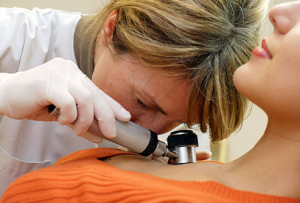
But here’s how you can help: try to keep the following factors in your life under control:
- Sunbathe less in the solarium, because... this is not only harmful to the skin, but can also cause new nevi to appear;
- You are less likely to be in direct sunlight, because... this has an extremely negative effect on the health of the epidermis;
- Before going outside, do not forget to wear a hat at home and be sure to apply it to your skin. sunscreen. This is especially true in summer;
- Try to walk and sunbathe on the beach during safe daytime hours - before 10 a.m. or after 4-5 p.m.;
- Watch your health, because... any colds and infections can serve you badly;
- Level up your hormonal background to neutralize hormone surges, which will lead not only to poor health, but also to the appearance of tumors.
If your new moles don't bother you at all, there's no need to worry, although you may want to see a doctor to make sure they're safe. As a rule, one remedy is used as a treatment - removal of moles from surgical method before modern methods getting rid of nevi.
Red moles are most often removed with a laser, and to prevent the appearance of new red vascular moles, you need to be examined by a dermatologist and undergo a course of treatment, which will be prescribed by a specialist after identifying problems in the body.
If hanging moles begin to appear on the body, then it is necessary not only to remove the moles that bother you and interfere with you, but to seek help from a doctor. The fact is that the appearance of hanging moles-papillomas can be caused by the human papillomavirus, the causes of which must be found by a specialist. To prevent new hanging moles from appearing, it is worth undergoing treatment. It is worth removing hanging moles:
- Laser removal method,
- Electrocoagulative removal method.
IMPORTANT! Remember just one thing - which moles should be removed, which are dangerous, and which cannot be touched only by a qualified dermatologist. Do not try to diagnose your moles yourself, much less “cure” them.

It is difficult to imagine a person who would not have a single mole. Some people have only a few of them and it is very difficult to notice these formations, while others have their entire skin covered with birthmarks. What is a birthmark? Is it safe? Why do moles appear? We will try to answer these and other questions in this article.
Before you begin to answer the question of why moles appear on the body, you need to understand what this phenomenon is. And that's where we'll start.
So, mole ( dark spots called nevus, honey) - pigmented formations on the skin of various colors. They come in a variety of colors: black, brown, red, yellowish, purple and others.
If we consider their location, then most often they are located at the level of the skin, less often they rise above it.
When skin cells begin to become overfilled with pigment, they turn into melanocytes. And a fairly large accumulation of such melanocytes will be a mole. The appearance of red formations is different; they are formed by the proliferation of blood vessels.
 It is difficult to find a person who does not have a single spot on either his face or body. By the way, if you count for every hundred centimeters squared on the surface of the skin, then they are most often and most often found on the face. An interesting situation arises with infants: they very rarely have this type of formation immediately after birth, but in the first few years the first moles appear. Scientists believe that in babies pigment spots are very small and simply invisible to the normal eye. As a rule, they actively appear in the first ten years, especially when compared with the first year after birth.
It is difficult to find a person who does not have a single spot on either his face or body. By the way, if you count for every hundred centimeters squared on the surface of the skin, then they are most often and most often found on the face. An interesting situation arises with infants: they very rarely have this type of formation immediately after birth, but in the first few years the first moles appear. Scientists believe that in babies pigment spots are very small and simply invisible to the normal eye. As a rule, they actively appear in the first ten years, especially when compared with the first year after birth.
Such formations appear very actively during adolescence. Why do moles appear during this period? This is due to the effects of hormones and puberty as a teenager. During this period, not only new spots are formed, but existing ones can also increase in size. The excessive appearance of new spots in pregnant women is also associated with hormones.
Risk groups and causes of stain degeneration
The risk group of people most susceptible to mutagenic and solar exposure includes:
- men and women with blond hair, eyes and skin;
- people who have many age spots, large moles and freckles;
- pregnant women.
If you are one of these types, then you are not advised to stay in the sun for too long. And if you have any questions or suspicions, you should contact an oncologist.
Various irritants can provoke pigment formation to degeneration, which will become a kind of impetus. And one of the most common tremors can be called excessive exposure to the sun or solarium.
Too much sun has not yet brought benefit to any person, and if burns also occur, then trouble cannot be avoided. Hormonal changes in the body of a teenager or a pregnant woman are another factor in the appearance and degeneration of formations on the skin. An injury to a mole, if it is touched with a knife or even a washcloth, can also be dangerous for a person; it is worth consulting a doctor to avoid unpleasant consequences.
Red moles
Red nevi appear due to pathologies or disruptions in the functioning of the vessels responsible for supplying the vessels with blood. Upon closer examination, you can see that it consists of small vessels woven together. Such a formation can appear on almost any part of the body.
In childhood, such formations are quite common. This is due to the fact that it is the circulatory system of children that undergoes certain changes, which explain why red moles appear.
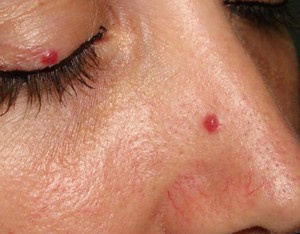 If you have red formations on your skin, then there is no need to sound the alarm: it is quite possible that they appeared on their own and will disappear. A dangerous situation will be when a red mole quickly increases in size and there is discomfort when touched.
If you have red formations on your skin, then there is no need to sound the alarm: it is quite possible that they appeared on their own and will disappear. A dangerous situation will be when a red mole quickly increases in size and there is discomfort when touched.
A distinctive feature of red spots is that when pressed with a finger, they become pale for a moment, and a little later return to their original color. original color. By the way, in medicine they are called angioma.
As for the appearance of red spots, the reasons are the same as for ordinary ones (from brown to black).
The sun, hormonal changes - all this is standard. Some experts believe that the appearance of spots of this color is a sign of diseases of the pancreas and gastrointestinal tract in general. In this regard, many still recommend visiting a specialist for prevention.
Hanging moles
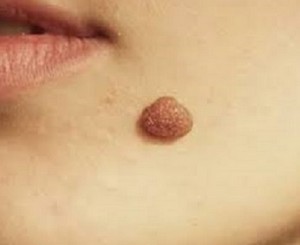 It would be incorrect to call so-called “hanging” moles moles. This formation, which causes so much inconvenience when washing or shaving, is papillomas. Papilloma is usually understood as formations that appear as a result of infection with the papilloma virus.
It would be incorrect to call so-called “hanging” moles moles. This formation, which causes so much inconvenience when washing or shaving, is papillomas. Papilloma is usually understood as formations that appear as a result of infection with the papilloma virus.
Due to the fact that such a “stain” can cause a lot of inconvenience, many people think about removing it. However, only a specialist can make a decision and express the feasibility of such an action. You can get rid of papilloma using a laser or electrocoagulation.
The appearance of spots: interesting facts
Any person who has moles is interested in the question of their appearance. However, it is very difficult to answer it unequivocally. The above factors - yes, of course, they influence the increase in the number of spots and their development. However, there are also those people who have not acquired such spots either during periods of hormonal changes or after long hours in the sun.
British scientists have suggested that the number of spots is due to the aging of the human body. So, the more there are, the older man. If you have a lot of dark spots, then you can be considered a long-livers, since in this simple way the body protects a person from physical aging.
If you are interested in the question of why moles appear, then there may be several answers to it. Prolonged exposure to the sun or solarium, hormonal changes, trauma to existing spots - all these are factors that can influence the appearance of new and degeneration of old moles.









